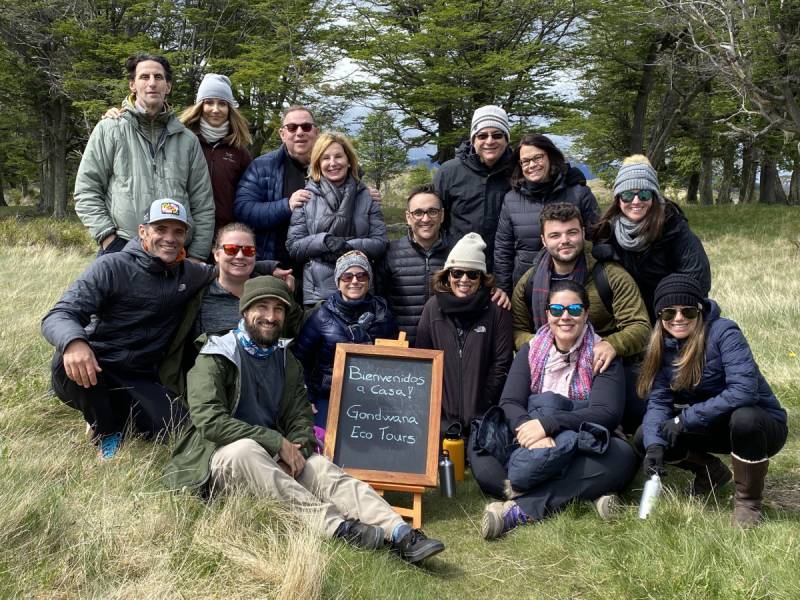Norway’s Western Fjord area is rich in beauty, history, culture, and drama. This landscape has not only been shaped by thousands of years of glaciation but also by the people and societies that have existed there over this time—from ancient humans to Vikings, mediaeval farmers to modern society. This blog explores some of the history of the Western Fjords and some of the key places to visit.
What is a fjord?
A fjord is a type of geological formation where there is an elongated, deep, narrow sea that reaches a long way inland. They have steep land on three sides, and an opening towards the sea called the mouth of the fjord. If the geological formation is wider than it is long then it is a bay or a cove, not a fjord. Fjords are found mainly in Norway, Canada, Chile, New Zealand, Greenland, the Canadian province of British Columbia, and the U.S. state of Alaska.
Fjords are created by glaciers that move slowly through the landscape, carving their way through the rock and leaving behind valleys with steep walls. Since fjords are undersea U-shaped valleys, they can be thousands of feet deep.
In front of a glacier arm, there is often a large deposit of gravel and other material that the glacier was carrying, called a moraine of gravel. At the mouth of fjords, these deposits form underwater barriers where the fjord becomes shallow. This shallow threshold is the reason that the water in fjords is often calmer than in the open sea, making them natural harbors.
Many fjords have skerries—small, rocky islands created through glaciation. This is what makes coastlines like Norway’s look like they’re cut into thousands of blocks of land when looked at on a map. The U.S. states of Washington and Alaska also have skerries.

Our guests kayak through the Western Fjords of Norway
Fjords and Norway
Fjords are incredibly important to Norway’s history, culture, and landscape. Fjord is originally a Norwegian word that has become international. The word “fjord” comes from the Norse word fjǫrðr. In its basic form, “fjord” means “where one fares through” and has the same origin as the words “fare” (travel) and “ferry”.
The longest fjord in the world is Scoresby Sund in Greenland (217 mi), but the Western Fjord region of Norway is home to the second and third longest, with the Sognefjord Fjord (126 mi) and the Hardanger Fjord (111 mi). The unspoilt fjord landscape of Norway has been added to the UNESCO World Heritage List because it is so worthy of protection.
Fun fact: When you include the 1,200 fjords the coastline of Norway is approximately 18,000 miles long, but only 1,600 miles long excluding the fjords.
Some fjords have coral reefs at the bottom, with some of the largest being found in Norwegian fjords. They are home to highly-adapted species of fish, plankton and sea anemones. At the bottom of a fjord, the water pressure can be hundreds or even thousands of kilograms per square meter. The organisms that live in cold-water reefs are specialised to survive in high pressure and total darkness. These deep, cold-water reefs are not as well studied as tropical coral reefs.
The Western Fjords, Norway
The Western Fjords region of Norway extends from Bergen at the southern end to Ålesund in the north. There are so many wonderful sights to see in the Western Fjords.
For a truly unforgettable family vacation in the Western Fjords region of Norway, consider embarking on a scenic road trip along the winding coastal roads that offer breathtaking views of majestic fjords and picturesque villages. Make sure to stop by Geirangerfjord, a UNESCO World Heritage Site known for its stunning beauty, and explore the charming towns of Flåm and Balestrand along the way. You can also take a fjord cruise to get a different perspective of the landscape or hike one of the many trails for a closer encounter with nature. Don’t forget to indulge in the local cuisine, such as fresh seafood and traditional Norwegian dishes, to complete your immersive experience in this enchanting region.
We’ve picked out a few of our favorites destinations in close proximity with Norway’s Fjords:
Bryggen
Bryggen is the old wharf of Bergen town. Bryggen is a reminder of the town’s importance as part of the Hanseatic League’s trading empire from the 14th to the 16th century, and because of this, it has been granted UNESCO World Heritage status. The aesthetic wooden trading houses are relics of an urban landscape that has disappeared from elsewhere in northern Europe.
Wander through the narrow cobblestone streets flanked by quaint wooden residences, evoking a bygone era of bustling trade and commerce. Join a guided tour to uncover the intriguing tales of the Hanseatic League’s influence on this charming waterfront enclave. Treat your taste buds to authentic Norwegian delicacies at cozy cafes and eateries nestled amid the historic architecture. With its prestigious UNESCO World Heritage designation, Bryggen beckons you to step into the past and craft lasting memories amidst its captivating ambiance alongside your loved ones.

The wooden trading houses of Bryggen
Vingen
Vingen is one of the largest rock carving sites in Northern Europe. More than 1,500 petroglyphs, or rock carvings, are found here. Most of them depict deer, but there are also images of humans and other wildlife. The carvings date back 6,000 – 4,000 years ago. The Vingen site is remote and requires permits to visit.
Hornelen
Hornelen is a mountain that sits on the eastern end of the island of Bremangerlandet. At 2,820 ft tall, it is the highest sea cliff in Europe. Hornelen has been used as a navigational landmark since the Viking era.
The entire Western Fjord region has a rich historical background, with many traces of Viking rule from thousands of years ago. This includes the burial mound at Myklebust, where a king was cremated inside Norway’s largest known Viking ship, a reconstruction of which can be seen in the Sagastad Viking Ship Museum.
Jostedalsbreen National Park
Jostedalsbreen National Park is home to the Jostedalsbreen glacier, the largest ice cap in continental Europe. Glaciers make up nearly 50 percent of the area of the national park while the rest is made up of magnificent valleys, rivers and cascading waterfalls.
Jostedalsbreen National Park beckons with its unparalleled natural wonders, notably the vast Jostedalsbreen Glacier, Europe’s largest. Enthusiasts revel in glacier hikes and ice cave explorations. The park’s panorama encompasses majestic fjords, tumbling waterfalls, verdant valleys, and towering peaks, offering a feast for the eyes and soul. Despite its icy façade, the park teems with diverse flora and fauna, from rare alpine plants to reindeer and eagles. Adventurers indulge in kayaking, rafting, and mountain biking amidst this pristine wilderness. Cultural treasures abound, with traditional villages and historic sites revealing the region’s rich heritage and folklore. Jostedalsbreen National Park promises an unforgettable blend of nature, adventure, and cultural immersion.
Geiranger Fjord
The Geiranger Fjord is seen by many as the jewel of the Norwegian fjords. This is one of the two fjords in Norway that are designated on the UNESCO World Heritage list. Waterfalls and unspoilt nature make the Geiranger Fjord a must-see in Norway.
The best way to experience the Geiranger Fjord is by boat. While on the water, you can stop to marvel at the famous Seven Sisters Waterfall. This spectacular waterfall cascades 1,350 feet from the cliffs down into the fjord. Another stop you can make on your boat trip is in Skagehola, where you can hike up to the Skageflå mountain farm and take in one of the most spectacular views in the Western Fjords.

We visit the Seven Sisters Waterfall in Geirangerfjord, Western Fjord, by RIB boat
Ålesund
Ålesund is one of Norway’s most unique towns. According to local legend, Ålesund was founded by Gangerolf (better known as Rollo outside of Norway), in the 9th century. In January 1904, a devastating fire caused huge amounts of damage to the town and most of the buildings were lost. The town was gradually rebuilt, mostly out of stone, between 1904 and 1907 in the Art Nouveau style that was popular at the time. The town is now famous for its interesting architecture.
The Brosundet canal snakes through the center of the town, and if you’re feeling energetic there is a viewpoint on Mount Aksla that overlooks the area, but you must walk up 418 steps to get there!

Ålesund is one of Norway’s most unique towns due to its Art Nouveau style of architecture
The Western Fjords of Norway are a cultural and physical landscape like no other. Norway’s centuries-old coastal culture combined with its dramatic scenery make any trip to the region an adventure in every sense. From exploring charming fishing villages to cruising along the majestic fjords, Norway offers a truly immersive experience that captivates all who visit. Our Norway: Western Fjords Adventure visits most of the places mentioned in this article.
Read more about our tour guides as voices of sustainability. Explore their inspiring stories of how they are making a positive impact on the environment and local communities.

